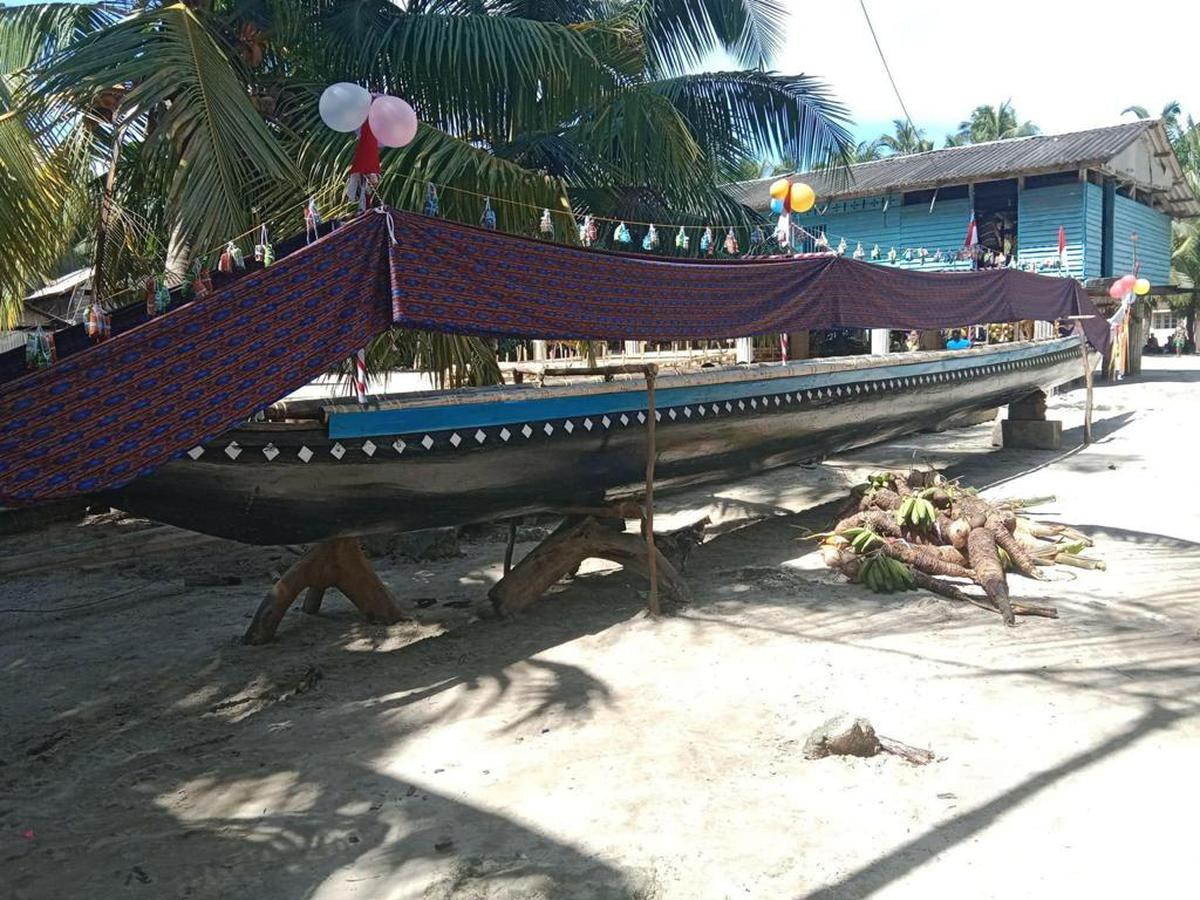Nicobari Hodi Craft | 21 Nov 2022
Why in News?
Recently, the Andaman & Nicobar Islands has filed an application, seeking the Geographical Indication (GI) tag for the Nicobari Hodi craft.
- This is the first application from the Union Territory seeking a tag for one of its products.
- Earlier, the government awarded the GI tag to Mithila Makhana.
What is Nicobari Hodi?
- The hodi is the Nicobari tribe’s traditional craft. It is an outrigger canoe, very commonly operated in the Nicobar group of islands.
- The technical skills for building a hodi are based on indigenous knowledge inherited by the Nicobarese from their forefathers.
- The hodi is built using either locally available trees or from nearby islands, and its design varies slightly from island to island.
- Considerations to be taken into account include the length of the finished canoe, which has to be 12 times that of its width, while the length of the undressed tree trunk has to be 15 times this width.
- Hodis are used for transporting people and goods from one island to another, for sending coconuts, for fishing and racing purposes.
- The tuhet, a group of families under a headman, consider the hodi an asset. Hodi races are held between islands and villages.
What is a Geographical Indication (GI) Tag?
- About:
- The GI is an indication used to identify goods having special characteristics originating from a definite geographical territory.
- The Geographical Indications of Goods (Registration and Protection) Act, 1999 seeks to provide for the registration and better protection of geographical indications relating to goods in India.
- It is governed and directed by the WTO Agreement on Trade-Related Aspects of Intellectual Property Rights (TRIPS).
- It was decided and also stated under Articles 1 (2) and 10 of the Paris Convention that the protection of industrial Property and Geographical Indication are elements of Intellectual Property.
- It is primarily an agricultural, natural or a manufactured product (handicrafts and industrial goods).
- Validity:
- This tag is valid for a period of 10 years following which it can be renewed.
- Significance:
- Once a product gets this tag, no person or company can sell a similar item under that name.
- GI registration of a product provides it legal protection and prevention against unauthorised use by others.
- GI tag helps in promoting the exports of the product.
- It also provides comfort to customers about the authenticity of that product.
- GI Registration:
- There is a proper process of registration of GI products which includes filing of application, preliminary scrutiny and examination, show cause notice, publication in the geographical indications journal, opposition to registration, and registration.
- Any association of persons, producers, organisation or authority established by or under the law can apply.
- The applicant must represent the interest of the producers.
- The Geographical Indications Registry responsible for administration of GI Goods is established at Chennai.
- There is a proper process of registration of GI products which includes filing of application, preliminary scrutiny and examination, show cause notice, publication in the geographical indications journal, opposition to registration, and registration.
- GI Tag Products:
- Some famous goods which carry this tag include Basmati rice, Darjeeling Tea, Chanderi Fabric, Mysore Silk, Kullu Shawl, Kangra Tea, Thanjavur Paintings, Allahabad Surkha, Farrukhabad Prints, Lucknow Zardozi, Kashmir Saffron and Kashmir Walnut Wood Carving.
UPSC Civil Services Examination, Previous Years Questions (PYQs)
Q1. Which of the following has/have been accorded ‘Geographical Indication’ status? (2015)
- Banaras Brocades and Sarees
- Rajasthani Daal-Bati-Churma
- Tirupathi Laddu
Select the correct answer using the code given below:
(a) 1 only
(b) 2 and 3 only
(c) 1 and 3 only
(d) 1, 2 and 3
Ans: (c)
Exp:
- A Geographical Indication (GI) is a sign used on products that have a specific geographical origin and possess qualities or a reputation that are due to that origin.
- Darjeeling tea was the first product in India to get a GI tag.
- Banaras Brocades and Sarees and Tirupathi Laddu have got GI tag while Rajathan’s Daal-Baati-Churma does not. Hence, 1 and 3 are correct. Therefore, option (c) is the correct answer.
Q2. India enacted the Geographical Indications of Goods (Registration and Protection) Act, 1999 in order to comply with the obligations to (2018)
(a) ILO
(b) IMF
(c) UNCTAD
(d) WTO
Ans: (d)
Exp:
- Geographical indications (GIs) are a type of intellectual property (IP). The World Trade Organisation (WTO) recognises intellectual property rights under TRIPS (TradeRelated Aspects of Intellectual Property Rights) Agreement.
- Under Article 22(1) of the TRIPS Agreement, the GIs are defined as “indications which identify a good as originating in the territory of a Member, or a region or locality in that territory, where a given quality, reputation or other characteristic of the good is essentially attributable to its geographic origin”.
- Therefore, option (d) is the correct answer.

